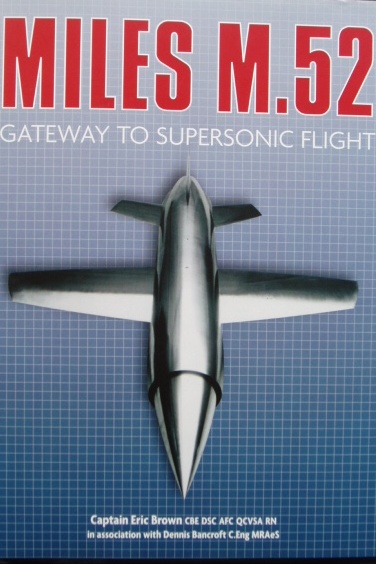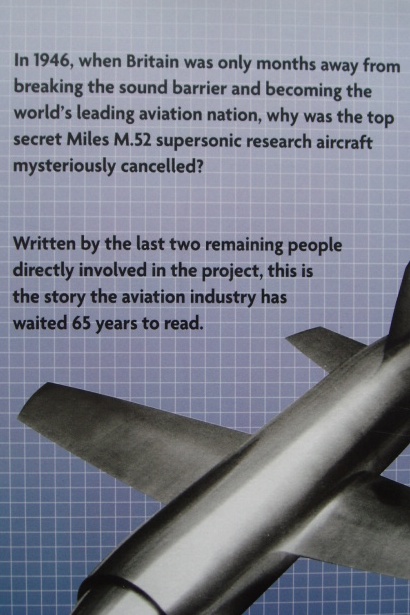


MILES M.52
Gateway to Supersonic Flight
Signed by Captain Eric 'Winkle' Brown RN
Signed opposite the title page by
Captain Eric ‘Winkle’ Brown
Spellmount First edition reprint 2013. 222 pages and well illustrated with photographs.
Very Fine condition hardback book in black boards with gilt titles and a Very Fine condition dustjacket. Nearly as new and unread.
In December 1943, a top secret contract (E.24/43) was awarded to Miles Aircraft. The contract was to build the world’s first supersonic jet capable of 1000mph. The only reliable source of data on supersonic objects came from the Armament Research Department and their wind tunnel tests on ammunition. From this, Miles developed an exceptionally thin-winged bullet shaped aircraft. The research was inexplicably passed to the Americans in 1944.
By December 1945, one prototype was virtually complete. The second, destined for an attempt at the sound barrier was 80% complete. In February 1946, Capt Eric Brown was confirmed as the test pilot and October 1946 was set for the supersonic trials. However, on 12 February 1946, Miles were ordered to stop production. No plausible explanation was given for the cancellation when Britain was within six months of breaking the sound barrier. Eric Brown and others directly involved including Dennis Bancroft, the Chief Aerodynamicist on the M.52, wrote this book to try and finally explain the mystery behind the cancellation.
Eric ‘Winkle’ Brown flew every major (and most minor) combat aircraft of WWII as well as all of the early jets. As a German speaking airman, he went to Germany in 1945 to test the Nazi jets and rocket aircraft and interviewed Herman Goering and Hanna Reitch.
Winkle was decorated more times than any other British test pilot and Fleet Air Arm pilot. He had a world record of 2,407 deck landings to his credit, including many world ‘firsts’. Brown also recorded more catapult launches than any other pilot. Extensive research indicated that he had flown more types of aircraft than any other pilot in the world, and certainly the most astonishing assortment. He was Chief Naval Test Pilot at RAE Farnborough, and became the first naval officer to command the world renowned Aerodynamics Flight, which was regarded as the top post in British experimental research test flying.
A fascinating book about what might have been Britain’s supreme aviation triumph.
